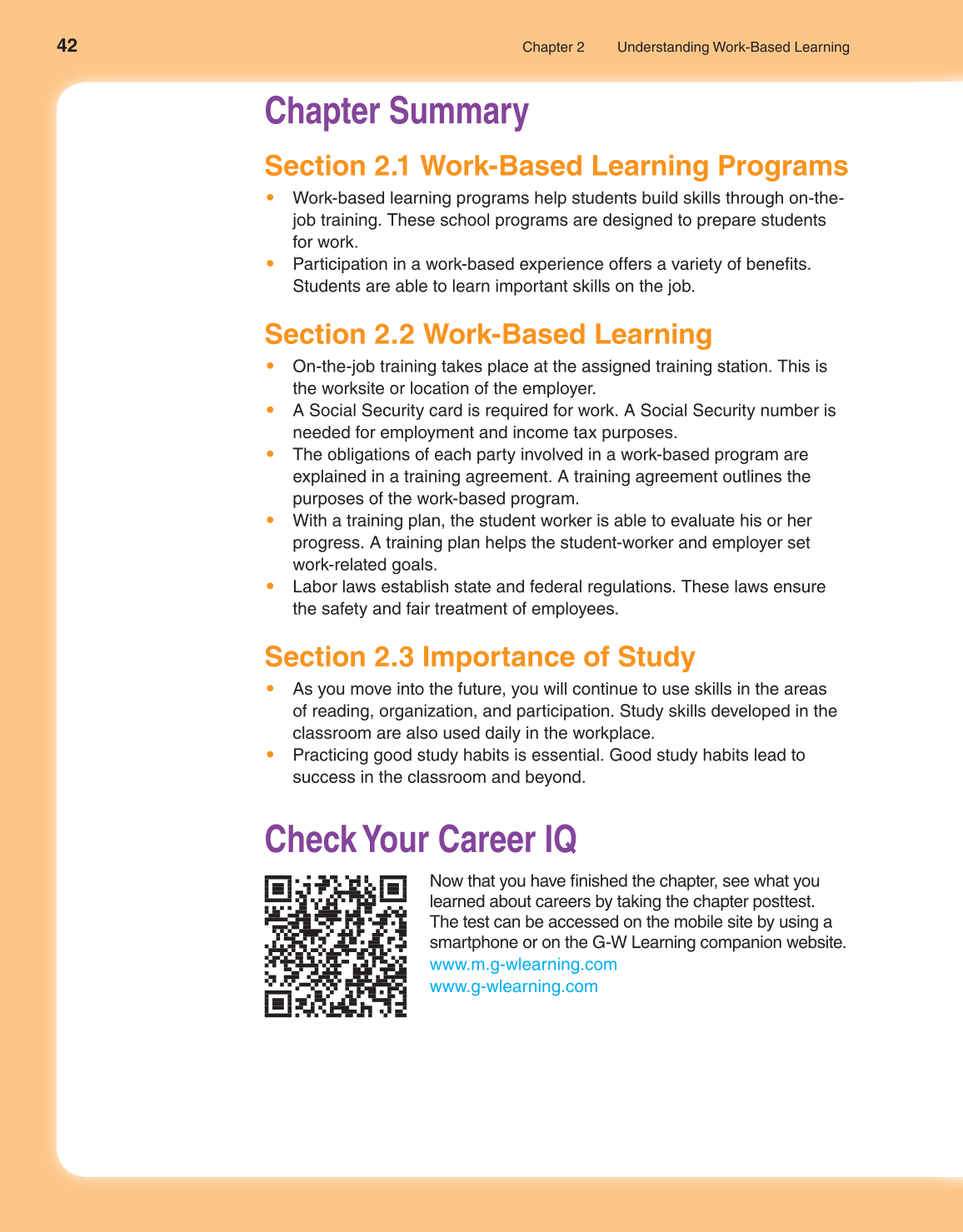42
Chapter 2 Understanding Work-Based Learning
Chapter Summary
Section 2.1 Work-Based Learning Programs
¶
Work-based learning programs help students build skills through on-the-
job training. These school programs are designed to prepare students
for work.
¶
Participation in a work-based experience offers a variety of benefits.
Students are able to learn important skills on the job.
Section 2.2 Work-Based Learning
¶
On-the-job training takes place at the assigned training station. This is
the worksite or location of the employer.
¶
A Social Security card is required for work. A Social Security number is
needed for employment and income tax purposes.
¶
The obligations of each party involved in a work-based program are
explained in a training agreement. A training agreement outlines the
purposes of the work-based program.
¶
With a training plan, the student worker is able to evaluate his or her
progress. A training plan helps the student-worker and employer set
work-related goals.
¶
Labor laws establish state and federal regulations. These laws ensure
the safety and fair treatment of employees.
Section 2.3 Importance of Study
¶
As you move into the future, you will continue to use skills in the areas
of reading, organization, and participation. Study skills developed in the
classroom are also used daily in the workplace.
¶
Practicing good study habits is essential. Good study habits lead to
success in the classroom and beyond.
Check Your Career IQ
Now that you have finished the chapter, see what you
learned about careers by taking the chapter posttest.
The test can be accessed on the mobile site by using a
smartphone or on the G-W Learning companion website.
www.m.g-wlearning.com
www.g-wlearning.com
